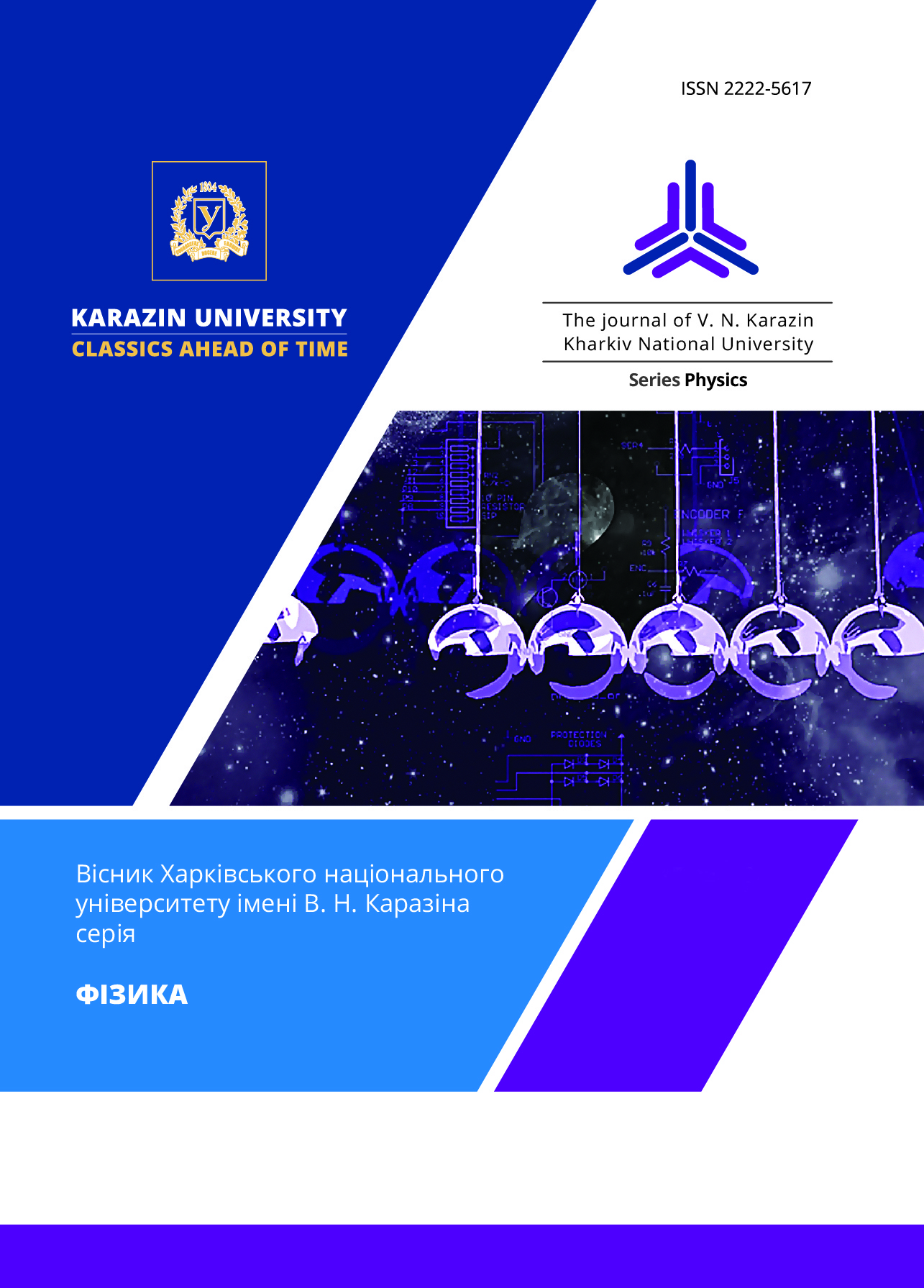Investigation of the influence of contact metallization geometry on the processes of rapid switching in structures with a base layer of cadmium telluride
Abstract
Ensuring the electromagnetic stability of modern electronic equipment, ie the ability to maintain operating parameters during and after the action of pulsed electromagnetic radiation of various origins is an important issue of electronic engineering and physics. The reason for the unstable operation of electronics under the influence of EM pulses is that overvoltage pulses occur in the circuits, which lead to the destruction of electronic devices based on semiconductor materials usually due to thermal breakdown of the p-n junction or overheating of base layers of semiconductor materials. Nowadays, the effects of resistive switching are known, which are actively used in modern electronics, and can be used to create elements to protect electronic equipment from electromagnetic pulses with a rapid increase in the front. The effect of resistive switching in cadmium telluride was found both in thick (over 100 μm) monocrystalline layers and observed in thin polycrystalline films. This work is aimed at studying the dependences of switching processes between states with low and high conductivity in CdTe films depend on various factors, such as film thickness, its initial structure, switching pulse power, contact metallization properties. A series of CdTe-based thin-film structures that differed in the geometric parameters of molybdenum contact metallization were fabricated by vacuum methods. To study the possible influence of contact metallization geometry on the processes of rapid switching in the structures Mo - cadmium telluride - Mo, the method of measuring and further analytical processing of their amplitude-time characteristics was used using a specially developed generator based on a charge line capable of generating three growth front not more than 2 ns. It was found that for experimental samples with a metallization diameter of 0.5 mm and 6 mm, similar parameters were observed - switching time at the level of 1-2 ns, identical values of the cut-off voltage and the nature of its dependence on the pulse amplitude. It is determined that the geometry of contact metallization does not affect the switching parameters in the structures Mo - cadmium telluride - Mo, so in the development of protection elements against electromagnetic pulses based on them can use existing industrial technology for forming metal layers.
Downloads
References
V.V. Eremenko, V.A. Sirenko, I.A. Gospodarev, et al., Low Temp. Phys. 43(11), 1323 (2017).
R.V. Zaitsev, V.R. Kopach, M.V. Kirichenko, et. al., Functional Materials, 17(4), 554(2010).
O. Rezinkin, M. Rezinkina, A. Danyluk, et al., 2019 IEEE 2nd Ukraine Conference on Electrical and Computer Engineering, (Ukraine, Kharkiv, 2019). https://doi.org/10.1109/UKRCON.2019.8880015
N. H. Halim, A. Azmi, Y. Yahya, et al. 5th International Power Engineering and Optimization Conference (PEOCO), (Shah Alam, Selangor, 2011). https://doi.org/10.1109/PEOCO.2011.5970422
E.V. Manzhelii, S.B. Feodosyev, I.A. Gospodarev, et. al., Low Temp. Phys., 41(7), 557(2015).
E.V. Manzhelii, V.I. Grishaev, Feodosyev, I.A. Gospodarev, et. al., Fiz. Nizk. Temp., 43(2), 322(2017).
Jiajia Guo, Peng Suo, Liping Liu, et al., Applied Optics, 58(30), 8200(2019). https://doi.org/10.1364/AO.58.008200
V.V. Eremenko, V.A. Sirenko, I.A. Gospodarev, et. al., Fiz. Nizk. Temp., 42(2), 134(2016). https://doi.org/10.1063/1.4941004
V. Eremenko, V. Sirenko, A. Dolbin, et. al., Solid State Phenomena, 257, 81(2017).
G.S. Khrypunov, V.O. Nikitin, O.L. Rezinkin, et al., Journal of Materials Science: Materials in Electronics, 31, 3855(2020).
M.G. Khrypunov, R.V. Zaitsev, D.A. Kudii, et al., Journal of Nano- and Electronic Physics, 10(1), 01016(2018). https://doi.org/10.21272/jnep.10(1).01016
M.V. Kirichenko, R.V. Zaitsev, A.I. Dobrozhan, et. al., 2017 IEEE International Young Scientists Forum on Applied Physics and Engineering, 108(Ukraine,2017).
T. Zhan, R. Yamato, S. Hashimoto, et al., Sci. Technol. Adv. Mater., 19(1), 443(2018). https://doi.org/ 10.1080/14686996.2018.1460177
T. Haryono, K. T. Sirait, T.H.Berahim International Conference on High Voltage Engineering and Application, 339(2008). doi: 10.1109/ICHVE.2008.4773942
W. Nunnally, IEEE Trans. Electron Devices, 37(2), 2439(1990). https://doi.org/10.1109/16.64516
E. M. Abdel-Salam, M. Khalifa, High Voltage Engineering, New York:Marcel Dekker, 519(2000). https://doi.org/ 10.1201/9781482290035
M. Lin, H. Liao, M. Liu, et al., Journal of Instrumentation, 13, 258(2018). https://doi.org/10.1088/1748-0221/13/04/P04004
S.K. Rai, A.K. Dhakar, U.N.Pal, Rev Sci Instrum., 89(3), 033505(2018). https://doi.org/10.1063/1.5017564
M.V. Kirichenko, A.N. Drozdov, R.V. Zaitsev, et. al., 2020 IEEE KhPI Week on Advanced Technology, 38(Ukraine, Kharkiv, 2020). https://doi.org/10.1109/KhPIWeek51551.2020.9250146
N. K. Nishore, P. Bhakta, R. K. Sharan, Electromagnetic Interference and Compatibility Proceedings of the International Conference, (1997). https://doi.org/10.1109/ICEMIC.1997.669839
S.M. Sze, K.K. Ng, Physics of Semiconductor Devices, 3rd edn., 832(2007).








3.gif)
